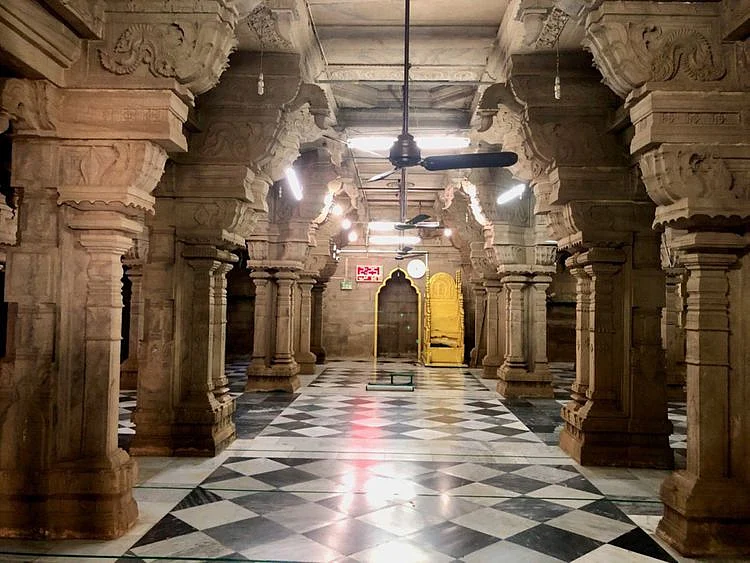India: Kilakari Juma Masjid, crowning jewel of amazing cultural confluence
The mosque on the East Coast is a magnificent testimony to true harmony of faiths

Bengaluru: Being home to one of the oldest civilisations and having always been among the culturally, spiritually and intellectually richest nations in the world, India has consistently attracted travellers and talents from different parts of the world.
When it comes to the diversity in cultural heritage, India is easily the capital of the world.
Like an appreciative mother, the vastness of India absorbed every incoming tradition, adding new strands to the already rich tapestry of Indian cultural heritage.
The confluence of cultures added new dimensions to the landscape of India, giving new expressions to the language of Indian art, craft and architecture.
No nation comes close to India in the spiritual traditions it has inherited, and none has the diversity in spiritual heritage like India does.
The diversity in India’s built heritage is particularly striking. The vibrancy and richness become all the more prominent in the spiritual architectural landscape of India where the permutations and combinations get dizzyingly mixed despite holding on to their distinct identity.
Being home to almost all the major world religions and with centuries of constant exposure to diverse cultures, India’s built heritage portrays the influence of various styles and philosophies of architecture.
The cross cultural influences are particularly visible in the medieval architecture when the lines of engagement were not yet so rigid and builders of the time had no qualms in borrowing from each other or accommodating the local elements.
Across India, there are many shining examples of cultural confluence that still stand firm, bearing witness to a time when things were less polarised and lines of differences were less pronounced.
Crowning glory
One of the most striking examples of cultural amalgamation that is hardly known to the world is the Kilakari Juma Masjid. Located in an obscure little town on the southern edge of India, the mosque is unlike any of you will find in across the country.
Kilakarai is a small sleepy town located on the East Coast of India, around 560km south of Chennai. Predominantly populated by the Indian Moors, a community of the mixed ancestry of Arab, Tamil, Malay and Sinhala people, this nondescript town has a rich history, but currently its main claim to fame is this Dravidian Mosque.
A major trading post of the past, with pearl, conch and other marine merchandise being their main source of income, Kilakarai attracted traders and travellers from across the world. Among its most famous visitors is the 14th century globetrotter Ibn Battuta.
The Kilakarai Juma Masjid is the crowning jewel of this amazing cultural confluence.
Born out of a unique synchrony of social and demographic elements, the Kilakara Juma Masjid is inspired by the famous Ramanathaswamy Temple in the nearby island of Rameswaram.
Poetry in stone
Employing the regional Dravidian architectural style reserved for ancient South Indian temples, the builders of the mosque have left a magnificent testimony to true harmony of faiths and cultures.
A symbol of devotion carved in stone, the edifice also speaks of the great workmanship of the local craftsmen.
As an ancient centre for trade and commerce, Kilakarai attracted merchants and sailors from far and wide, many of whom settled down in the warm environs of the town.
One of those who made Kilakarai his home was a wealthy merchant Shaikh Abdul Qadir, who is believed to have commissioned the mosque.
Venerated as a saint and a philanthropist, not much is documented about the nobleman, who is fondly known as Seedi Qadir among the locals.
According to the Qadhi of Kilakarai, Dr. Kader Baksh Makhdoomi, Seedi Qadir built this grand mosque during the later half of the 17th century.
The local legend has it that the current structure was built in place of a more than 1,000 year old mosque.
The Qadhi says that Seedi Qadir was a high-ranking administrator of Bengal during the reign of Mughal Emperor Aurangzeb Alamgir.
A generous builder, Seedi Qadir built several religious and secular structures on the East Coast, after settling down in the region.
Cultural exchange
According to Dr. Makhdoomi, Seedi Qadir died in Kilakarai in the late 17th century and was buried in the premises of the Kilakarai Juma Masjid. His tomb is venerated by people of all faiths and is still visited by the locals for blessings.
His contributions to the heritage of the region include the Ramnath Palace he built for the local Sethupathi monarch in the nearby district capital of Ramanathapuram. In return, the king sent his skilled workforce to build the Kilakarai Juma Masjid, employing the same Dravidian architectural language that is used in the Ramanathaswamy Temple, with a few exceptions.
The only elements that distinguish this mosque from a typical Dravidian temple is the absence of a towering gopuram and the figures that are usually found on the walls and pillars of a temple. Instead, what you will find is a distinctively designed mehrab (an alcove on the front wall where the Imam stands to lead the prayers) and the profusely carved pillars and walls adorned with floral and vegetal patterns - a distinct hallmark of Islamic architecture.
Studying the built heritage is one of the best ways of looking at history and learning valuable lessons from the past that are generally found missing in the history textbooks.
Learning history from authentic sources is essential in order to counter the prevalent fake narratives of division.
History is not black and white like some of them would like us to believe. It is dynamic, colourful and vibrant, woven through the diverse strands that make the fabric of our society.
-- Shafaat Shahbandari is a freelance journalist and Founder-Editor of Thousand Shades of India
Sign up for the Daily Briefing
Get the latest news and updates straight to your inbox
Network Links
GN StoreDownload our app
© Al Nisr Publishing LLC 2025. All rights reserved.